Fold the Facts
Make an origami finger game that erupts with volcano facts.
- All
- Things to Make
- Puzzles + Games
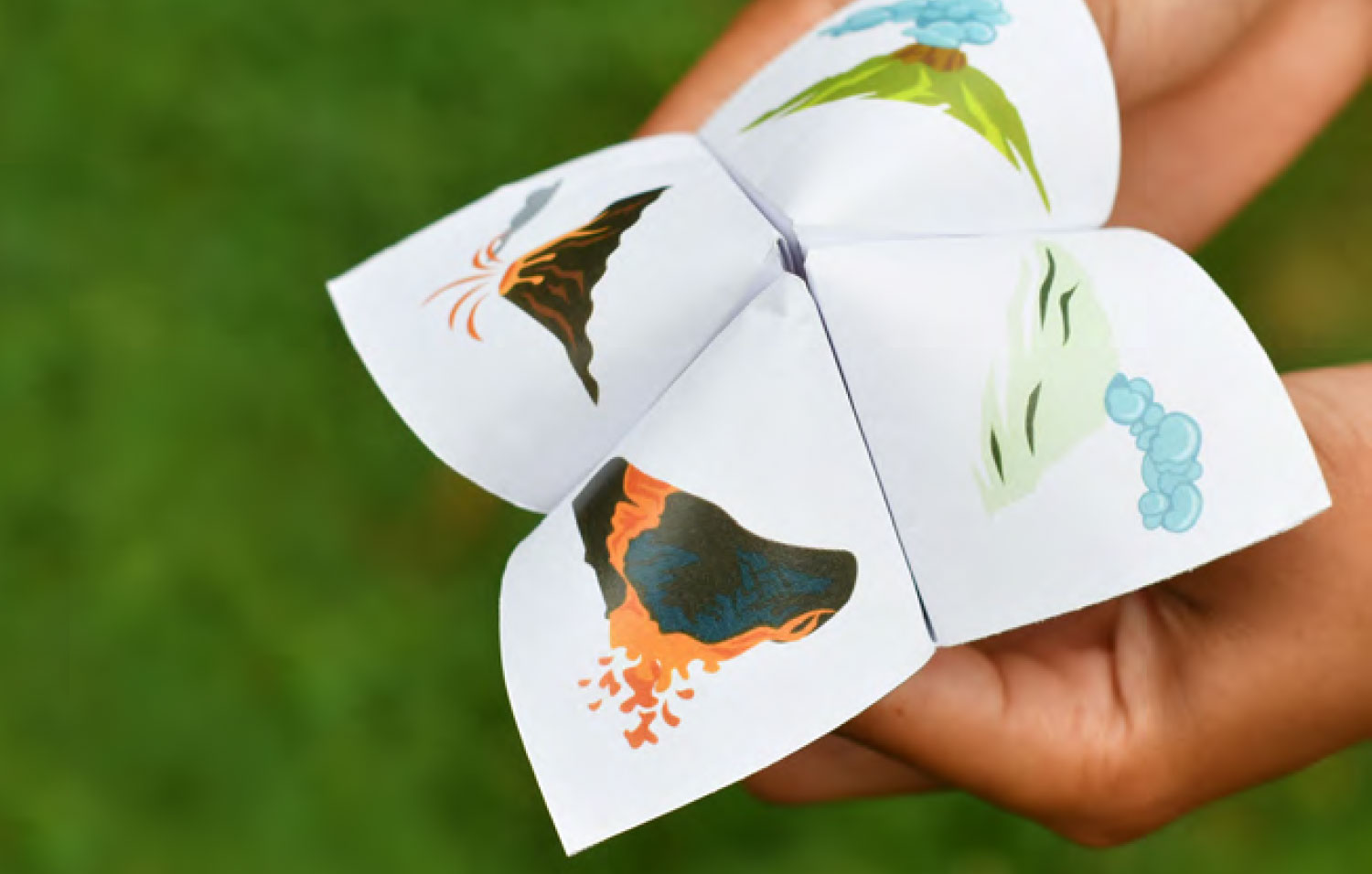
What you’ll need:
- Paper
- Markers, crayons, pencil crayons or paint
- Scissors
- Ruler
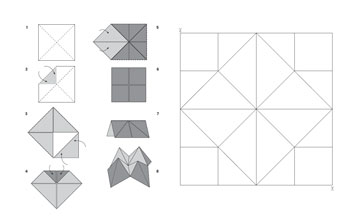
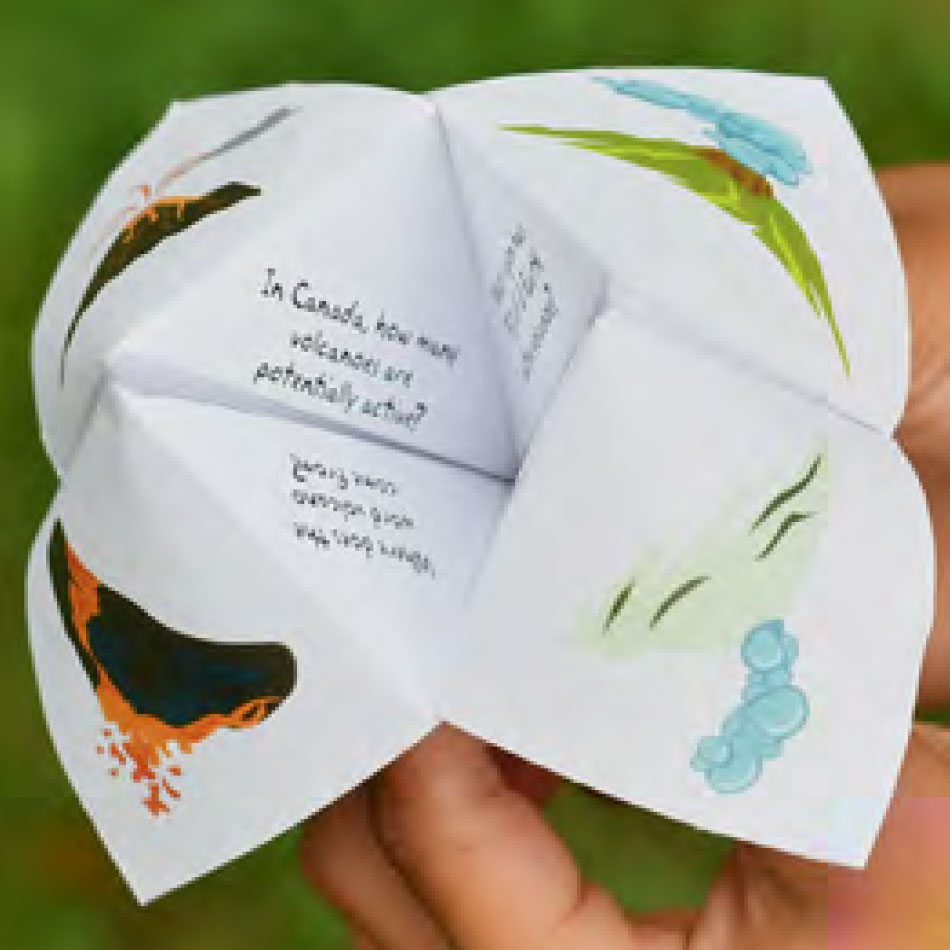
Activity setup:
- Start with a square piece of paper. (You can print and cut out the template on the last page, or make your own piece of square paper using scissors and a ruler.)
- Fold your paper in half, and make a rectangle. Unfold your paper.
- Fold your paper in half again, this time in the opposite direction. When you unfold it now, it should be divided by fold marks into four small squares, or quadrants.
- Take each corner and fold it into the centre. The lines from your first two fold swill help keep you straight. Do not unfold these new folds. Once all four corners have been folded into the centre, your piece of paper will look like a diamond.
- Flip the paper over and fold each corner into the centre again.
- Flip the paper back to the other side, and loosen each flap a bit with your finger. Then put a thumb and your pointer finger into two flaps on one side and the other thumb and pointer finger into the two flaps on the other side. Push your thumbs and fingers together. Your paper should now be roughly volcano-shaped, with four separate peaks pushed together, sitting on your fingers and thumbs.
- Write a short volcano question on each of the triangles on the inner surfaces of the peaks.
- Write the answers to the questions under the corresponding flaps.
- Decorate the outside to look like a volcano.
- Use this game on your own to learn volcano trivia or play it as a guessing game with afriend or family member.
- Have fun!
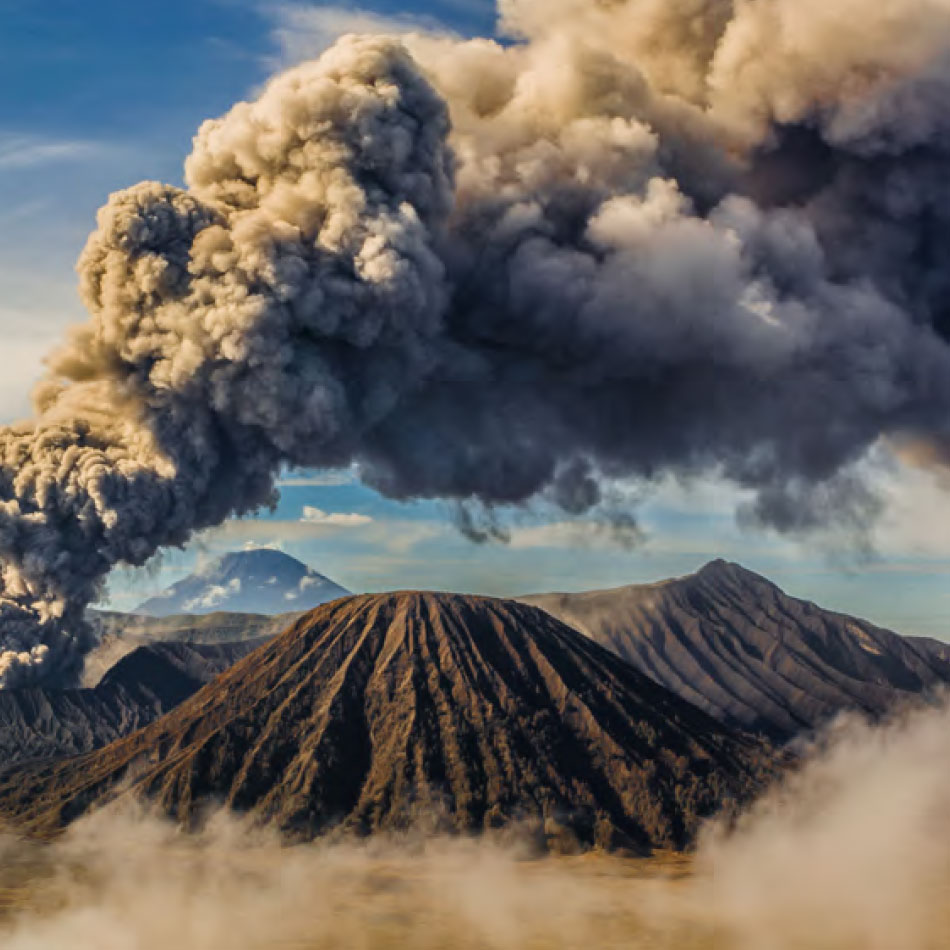
How does it work?
Volcanoes are formed when molten rock, gas and ash erupt through fissures in a planet’s crust and onto its surface. Some volcanoes don’t see any action for 10,000 years or more—they are not active—but others have dramatic explosions, throwing hot gases, ash and liquid rock into the air.
Geologists group volcanoes into four main types, based on how they erupt and the landforms the spewed materials create. Cinder cone volcanoes are steep, cone-shaped volcanoes built from lava expelled through a single vent. Composite volcanoes are tall and have several vents. Shield volcanoes are gently sloping volcanoes made from fluid lava, which comes mainly from a single vent and spreads out over a large area before hardening. Lava dome volcanoes are low, dome-shaped volcanoes that grow due to a build-up of thick lava cooling beneath the surface.
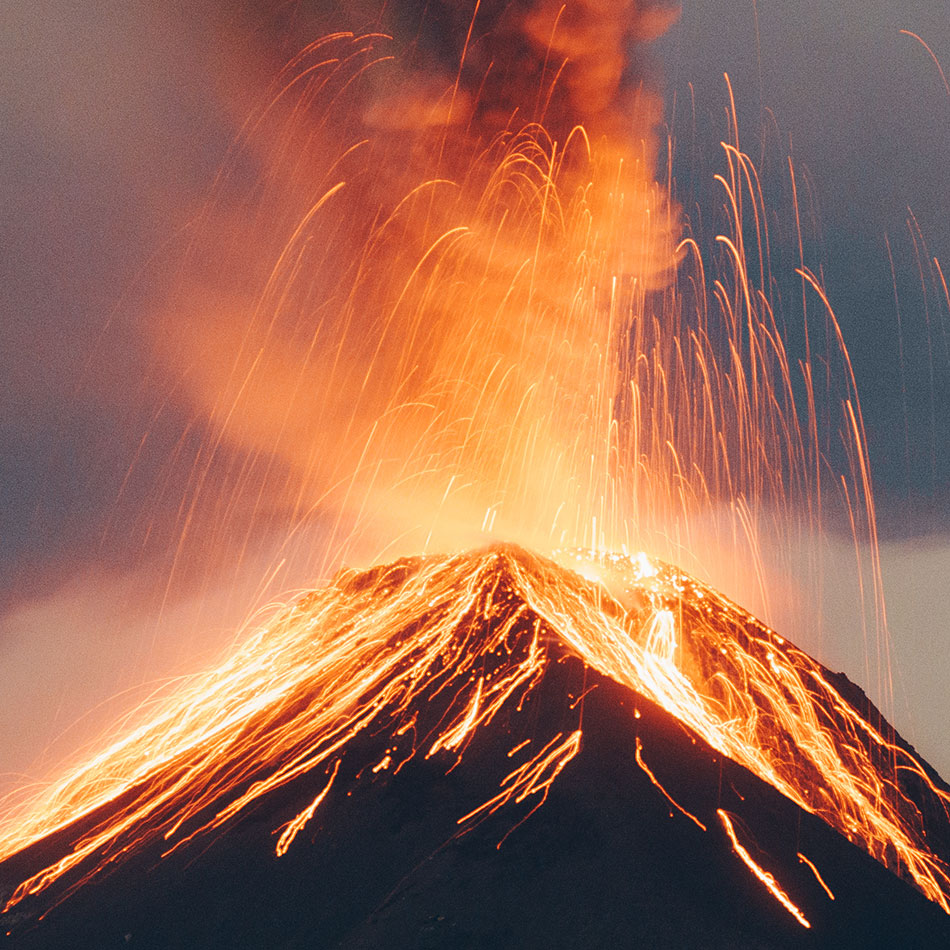
Volcano Trivia
Q: Where does the word "volcano" come from?
A: Vulcan, the Roman God of fire
Q: What is lava?
A: Hot, liquid rock that has come out of a fissure or a volcano
Q: What is magma?
A: Hot, liquid rock deep under the Earth’s surface
Q: In Canada, how many volcanoes are potentially active?
A: Five—all located in British Colombia and the Yukon
Q: What region has 75% of all Earth’s active volcanoes?
A: The Pacific “Ring of Fire”
Q: When was the most recent volcanic eruption in Canada?
A: 150 years ago, in Lava Fork, in northwestern BC
Q: Where is the biggest known volcano in our solar system?
A: 624 km wide and 25 km high, it is the Olympus Mons—on Mars
Q: What volcanic rock do we use to remove dead skin?
A: Pumice
Q: How many potentially active volcanoes are there on Earth?
A: Approximately 1,500 (that we know of)